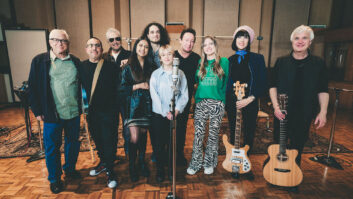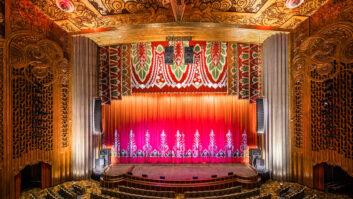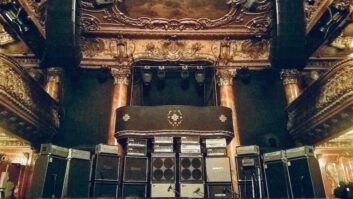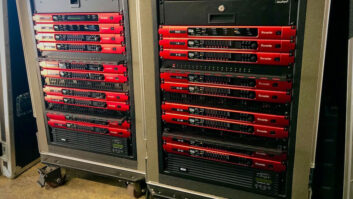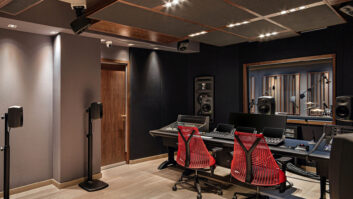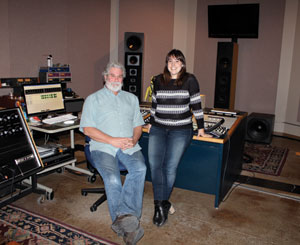
David Glasser and Anna Frick
Paramount Records, above and beyond any label from the time period, had the very worst sound quality and the very worst pressing technology available,” states restoration/remastering engineer Christopher King of Long Gone Sound Productions. “Most of the recordings were done using the cheapest materials; I think they even ground up chairs and tables and threw them in with the shellac mix to make it go a little further.”
King is talking about the Paramount label founded by the Wisconsin Chair Company in 1917. Music was a cheap sideline for the manufacturer, but what those Midwestern spendthrifts lacked in sonic quality, they made up for in quantity. During their first 10 years of operation, the label recorded more than 800 sides, comprising wonderful performances by greats such as Louis Armstrong, Ma Rainey and Blind Lemon Jefferson, as well as other luminaries and relatively unknown jazz, blues and folk artists.
Now, for the first time, these recordings are being remastered and released en masse. John Fahey’s Revenant Records has joined with Jack White’s Third Man label to issue the Paramount catalog in two giant batches. The first, The Rise and Fall of Paramount Records, Volume One (1917-27), is available now in a magnificent oak cabinet containing six vinyl albums and a USB drive with 800 songs.
“The package includes a custom player that people can use to construct playlists and sort songs by artist and date, or you can import files into your iTunes player,” explains David Glasser, chief engineer at Airshow Mastering, Boulder, Colo. Glasser, along with engineer Anna Frick, mastered the collection from .wav files provided by King.
“The original metal-part masters have, by and large, been lost,” King explains. “They were either used for the war effort [for scrap materials during World War II], or they were junked. I think one or two have turned up over the years. I heard a long time ago, somebody found a chicken coop in Wisconsin that was made of Paramount metal parts! But in general, resurrecting the company’s catalog meant going to a lot of the different collectors in the world and amassing as many 78s of this material as possible.”
King works out of his home studio, where he operates a McIntosh Mac C20 tube preamp, patched from a Technics variable-pitch turntable, to transfer those 78s to digital format. “I use a Manley Massive Passive,” he says, “not as an EQ, but more as a limiter, and that goes through my TL Audio Tubetracker, which is a tracking board, but I use it as an EQ board. After that, the signal is more or less the way I want it; it goes through the [Apogee] Rosetta A/D converter, and then I burn a disc from there.”

Photo: Jo McCaughey
King loads batches of files onto thumb drives, which then go to Airshow. “We primarily used iZotope RX as a stand-alone program, and did a final pass in Sonic Studio,” Glasser says. “We didn’t use any broadband noise reduction, but we did a lot of declicking and a lot of work using the [iZotope] spectral editor to take out anomalies and repair dropouts in the audio. At the end, we would gather groups of songs together—about 100 at a time—and level-match and do any kind of touch-up EQ that was needed.”
“That spectral editor is the coolest tool, because you can really see the hot spots, dial in, and use the pencil tool to cut a lot of stuff out easily,” adds Frick. “You can see the whole spectrum, see where the noises are coming from, and how much you are actually taking out. Oftentimes, on this project, we had to leave things dirtier than we would have liked, but that’s what we needed to do to keep the musicality.”
Frick also emphasizes that an essential ingredient to accomplishing such a voluminous project was attention to file management. “We manage most of our projects in Filemaker,” Frick says. “We’re able to custom-build tangents from our primary database to handle large projects like this. We did this for the Grateful Dead Europe ’72 set, and it worked out really well to manage our workflow and keep it on track. So Dave always knows what songs I’m working on, and I always know what songs he’s working on.”
The final, giant package is a somewhat mixed bag sonically, because of the varying quality of source material. But all three of these engineers share the belief that preserving as much of the original musical performance as possible is a critical and richly rewarding undertaking.
“I worked on the Anthology of American Folk Music, which was a similar collection in intent,” says Glasser, whose long-successful company celebrates 30 years in business this year. “It’s a window into the past that might otherwise be forgotten. You hear songs in the Paramount set that are still being played today.
“We just remastered all of the Grateful Dead’s studio albums, and then I heard a cool version of ‘Samson and Delilah’ on the Paramount collection; that was a Grateful Dead staple,” Glasser continues. “Or ‘Goin’ Down the Road Feelin’ Bad’ from 1920. It’s pretty remarkable that, without having any grand plan, this one record label covered the vernacular music of America so thoroughly.”
